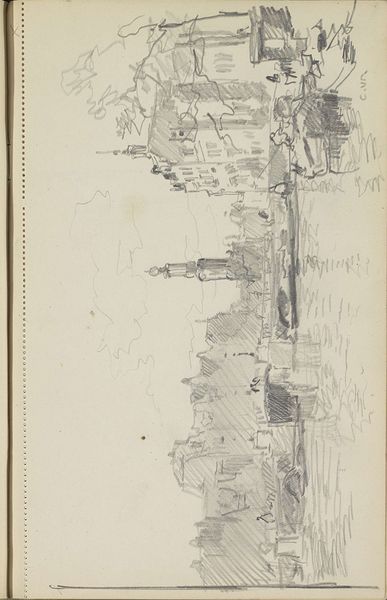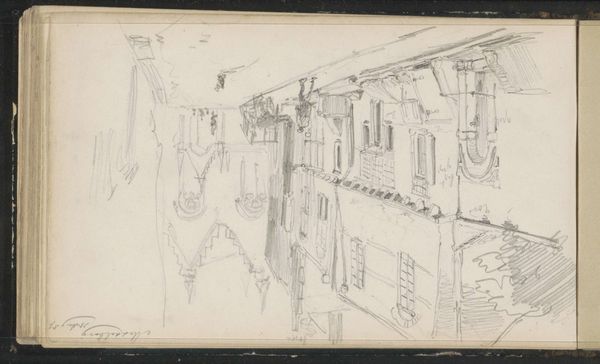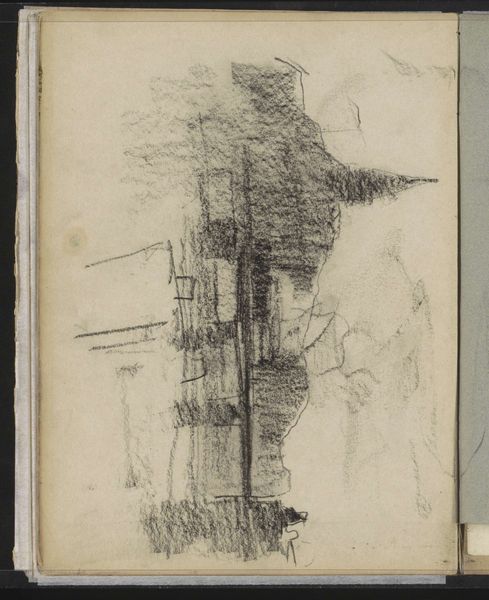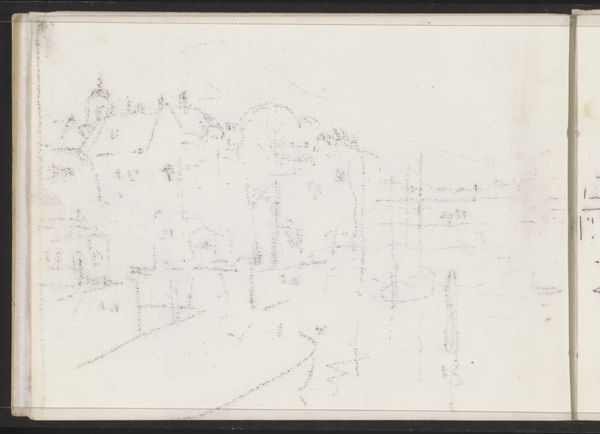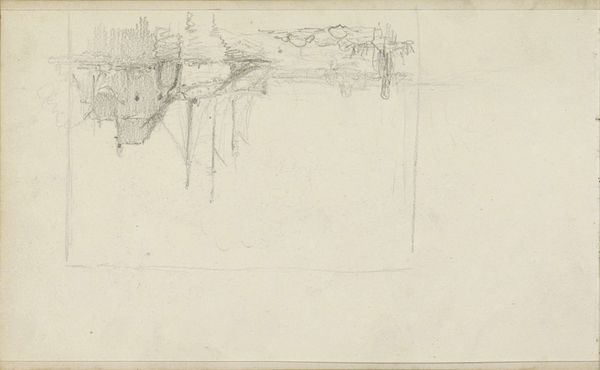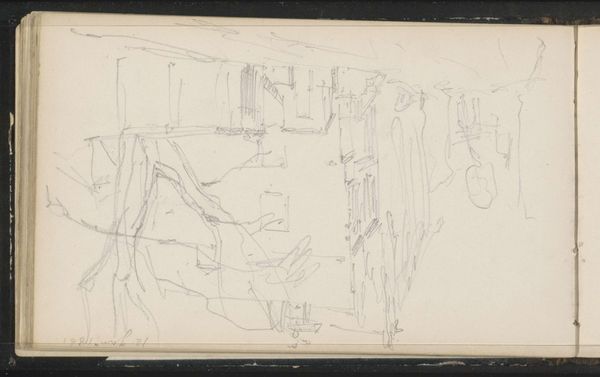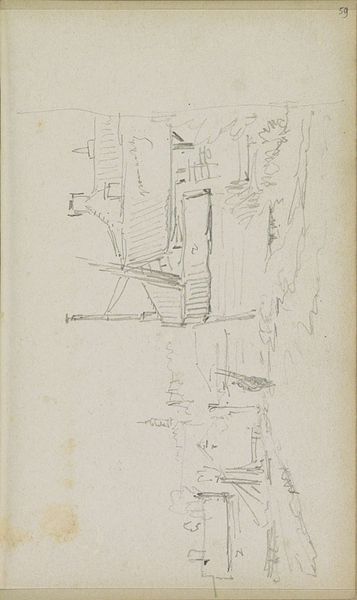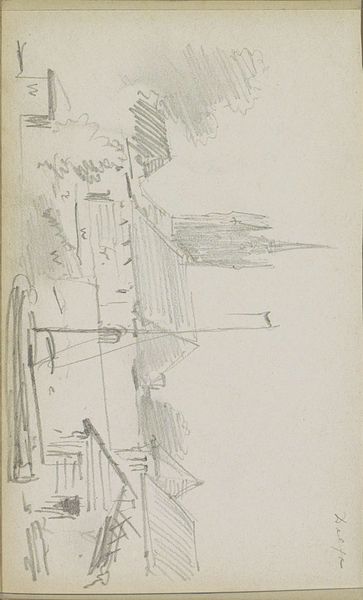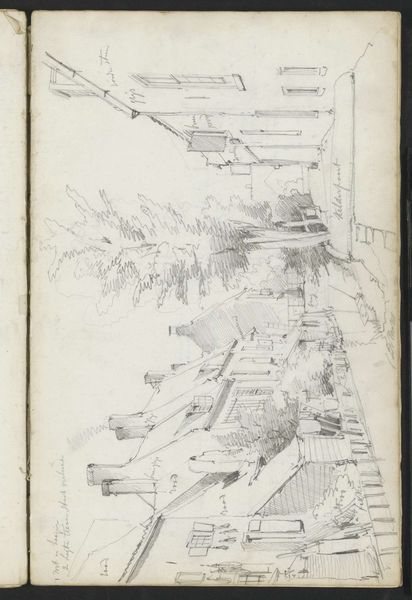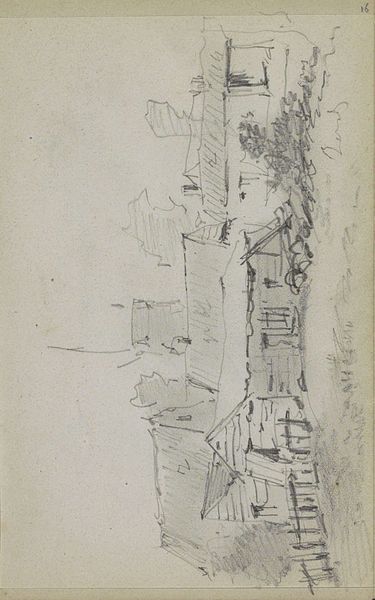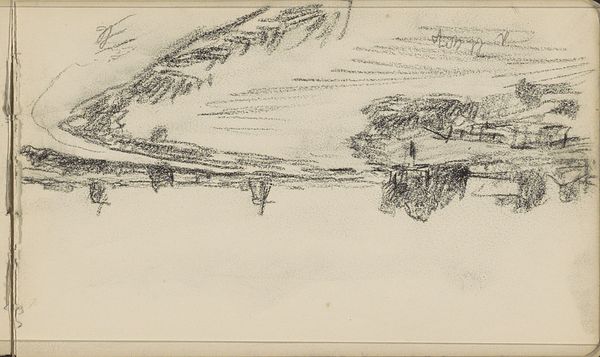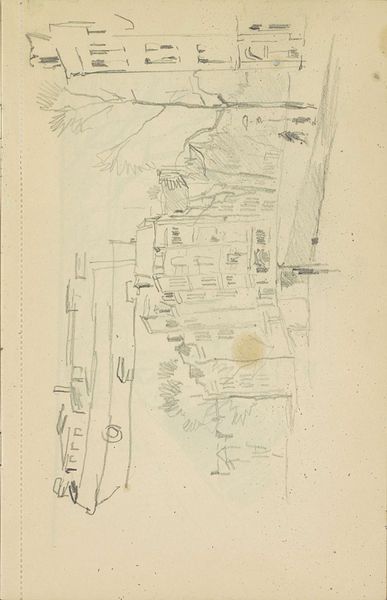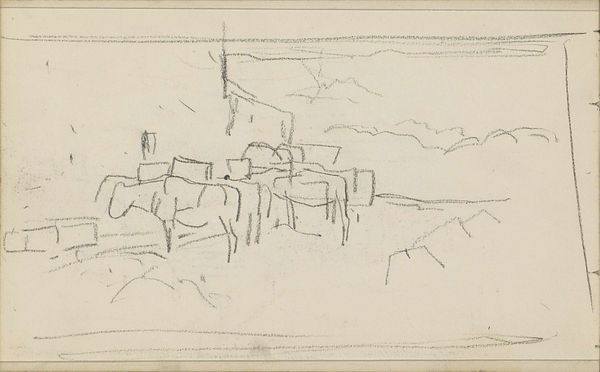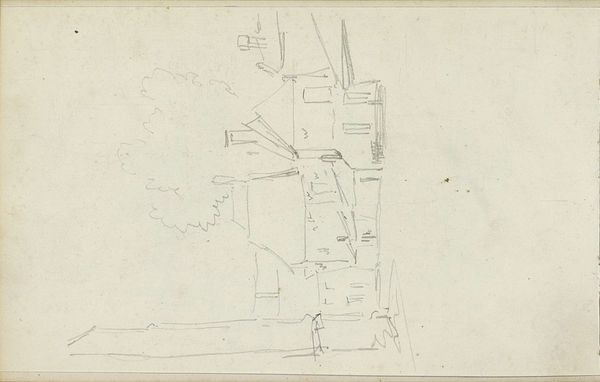
Gezicht op gebouwen aan een straat of plein, mogelijk in Middelburg c. 1856 - 1861
0:00
0:00
cornelisspringer
Rijksmuseum
drawing, pencil
#
drawing
#
pencil
#
cityscape
#
realism
Copyright: Rijks Museum: Open Domain
Editor: Here we have Cornelis Springer’s pencil drawing, “Gezicht op gebouwen aan een straat of plein, mogelijk in Middelburg,” from around 1856 to 1861. It looks like a quick sketch of a European cityscape. What do you see in this piece? Curator: This drawing offers a window into the rapid urbanization happening in 19th-century Europe, and raises questions about whose stories get told and whose spaces get valued. Think about it: Who is this space *for*? Whose experiences are reflected in these increasingly structured urban environments? Editor: I hadn’t thought about it like that. It just seemed like a pretty drawing. Curator: It's easy to get lost in the aesthetic appeal, but let's dig deeper. The artist meticulously captures the architectural details, right? What might this intense focus on buildings signify during a time of such dramatic social change? Is he perhaps idealizing order, or tradition, in response to the chaos of industrialization? Editor: Maybe. Or maybe he just liked architecture. Curator: That's fair! But we can also consider how even seemingly neutral depictions contribute to the larger narratives shaping our understanding of history. Who gets to represent these urban spaces, and what biases might they bring? What's missing from this picture? Who isn't being seen? Editor: So you’re saying we can read a drawing of some buildings as a commentary on societal power structures? Curator: Precisely. It reminds us to critically examine even the most seemingly benign images. This exercise gives us more tools to build toward a more inclusive historical understanding. Editor: Wow. I'll definitely look at these historical drawings differently now! Curator: Me too. There's always more to uncover and understand together.
Comments
No comments
Be the first to comment and join the conversation on the ultimate creative platform.
